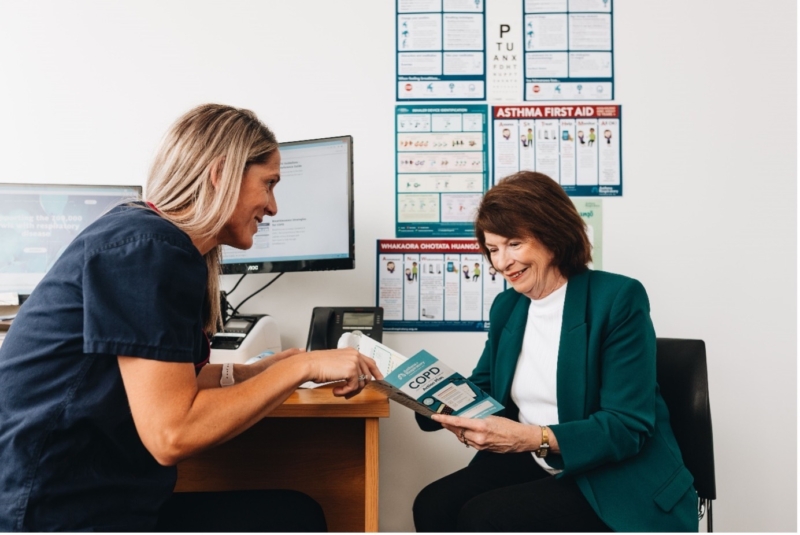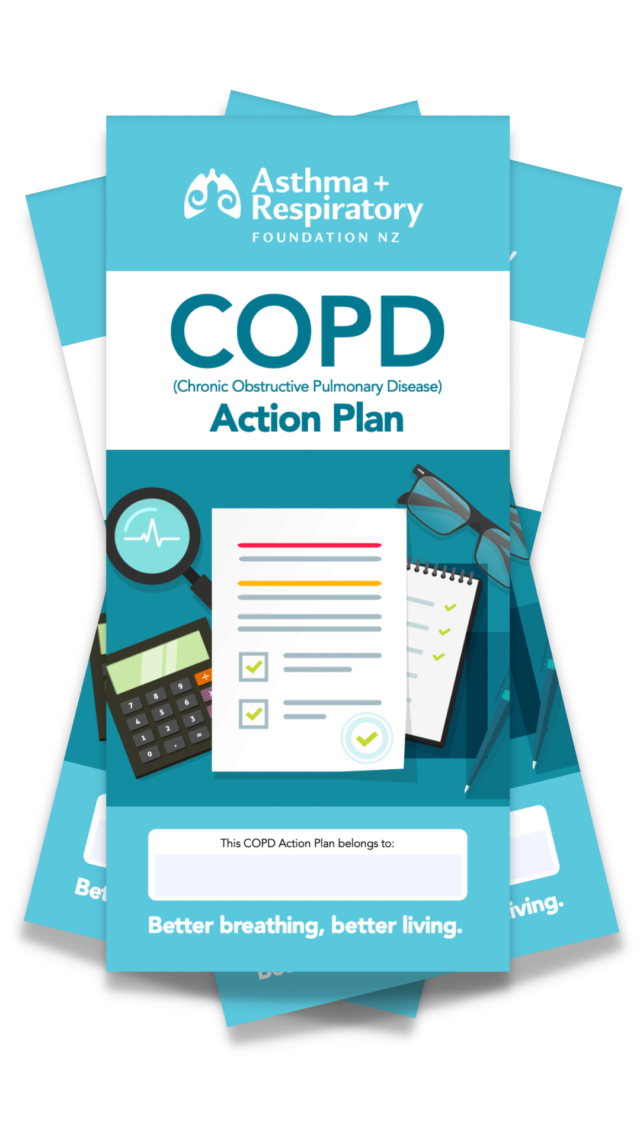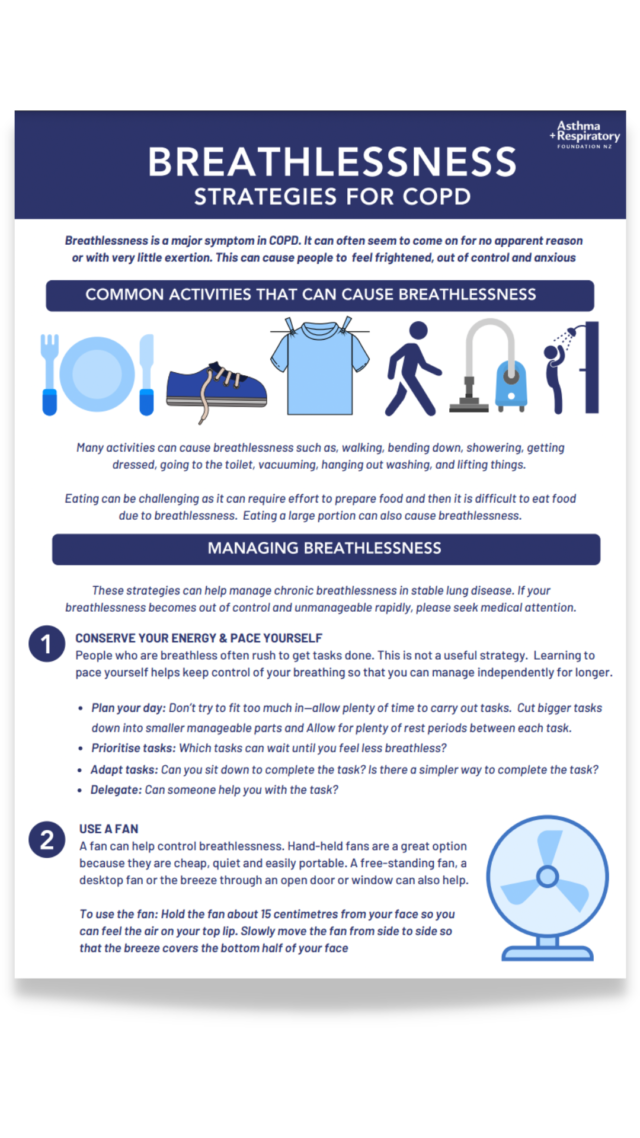It is important to manage your COPD as effectively as you can. The good news is that there are lots of things you can do to control your symptoms and improve your quality of life. Watch our webinar here to learn more about living with COPD.
A COPD Action Plan is a written or digital plan that will help you monitor how well you are and outlines what to do if your COPD gets worse. These plans are written with your health practitioner and can be downloaded here.
People who have COPD have to work harder to breathe and tend to breathe using the muscles in their upper chest, rather than the lower chest muscles. This takes more energy and is tiring. A physiotherapist is the best person to help you learn good breathing control. The benefits of good breathing control should not be underestimated. Breathing control is useful to manage shortness of breath and for times when you are unwell. Read more.
Research confirms that stopping smoking and avoiding tobacco smoke is the most important way to improve the prognosis in those with COPD. Quitting smoking is the single most important step you can take to improve the outcome of your COPD diagnosis. No matter how severe your COPD, stopping smoking can slow further decline and damage to your lungs. It is never too late to stop. Read more.

Exercise is important for managing COPD. Exercise that makes you ‘huff and puff’ is good for your lungs and heart. Ideally, you should exercise for about 20-30 minutes per day. You may need to start with 10 minutes of exercise and slowly build this up over time. As you become fitter, your body will adapt, and everyday activities will begin to feel easier. Read more.

Pulmonary rehabilitation is a programme of education and exercise which usually runs for 6-12 weeks. Pulmonary rehabilitation reduces breathlessness, improves quality of life, and reduces depression in people with COPD. Everyone with COPD should attend at least one programme as it will help you to understand all you need to know about COPD and how to manage it. Find a programme.

Although you may lose your appetite if you are breathless, it is important to eat well. With COPD more energy is required by the body for breathing, so you need to alter your diet to allow for this. If you are overweight your breathlessness may become worse as your body works harder to carry extra weight. Read more.

There are lots of people who can support you to look after your COPD. It is important to build a partnership with your healthcare practitioner. Following their advice should help you manage your symptoms. Read more.

Keeping up to date with vaccinations, like seasonal flu vaccines and COVID-19 boosters, is particularly important for people with respiratory conditions. Read more.
A damp and humid home encourages mould growth. Mould can trigger COPD symptoms and increase the likelihood of a flare-up. To avoid mould growth, keep your home warm, dry and well-ventilated. Read more.

Stress can be a COPD trigger. It may cause your breathing rate to increase, which can make you feel out of breath. Living with a chronic medical condition can increase how often a person feels stressed. For tips on how to manage stress, read more.

Some people may require medicine to help them manage their COPD symptoms. It is important that you understand how your medicines work and then take them as prescribed. COPD medication works by either opening up the airways (beta agonists) or by relaxing the muscles around the airways (muscarinic antagonists). Both of these medications work to relieve COPD symptoms and make breathing easier. Read more.

This self-management plan for chronic obstructive pulmonary disease (COPD) is to be completed by healthcare practitioners, together with their patient. These personalised action plans improve quality of life for patients and focus on recognising and treating deteriorating symptoms. Available in English, te reo Māori, Samoan, Tongan and Simplified Chinese

Breathlessness is a major symptom in COPD. This comprehensive document outlines various strategies and techniques to help manage breathlessness.